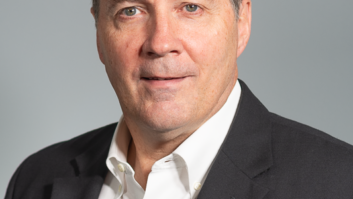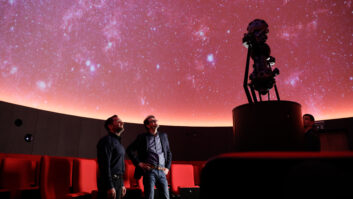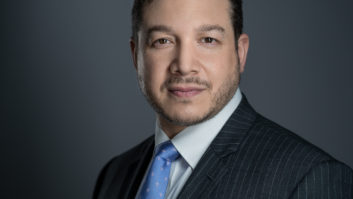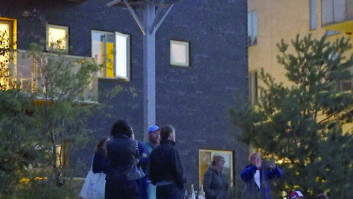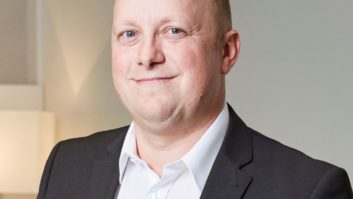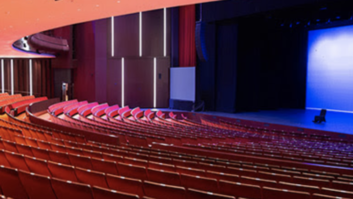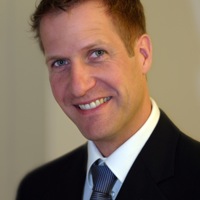
How did you come to be working in the field of acoustics?
I was a physics student at Basel University when I started to get involved with some sound engineering work for local bands – both live and in the studio. Subsequent to gaining my Masters Degree, I pursued the sound engineering interest by going to the Full Sail Center for the Recording Arts in Florida, which is where I first encountered [WSDG co-founder] John Storyk.
In the long-run, I had really wanted to become a mix engineer for feature films, but I realised during my time at Full Sail that there were about 900 people who wanted to do the same thing – many of whom were better than I was! I also wasn’t keen on moving to LA, which was very much the hub for that kind of work.
Meeting John opened up another opportunity [in acoustic design and consultancy], and I was glad to have that alternative option. It ended up being a perfect combination of my previous education in physics and my love for music and audio technology. But once in a while, I still get the opportunity to stand behind the mixing desk!
After a brief period at WSDG in New York, you returned to Switzerland in 1998 to head up the company’s new European office. What kind of presence did WSDG have in Europe at that point?
We had a few projects in Europe – perhaps one or two each year – and I think there was an interest in exploring that a little more deeply. Gabriel Hauser and Michael Chollet joined the company a couple of years later, and we started to get really busy, taking on projects in Switzerland, Germany, Holland, Italy, Portugal, Russia and the UK. We now have seven staff across Europe (out of approximately 45 worldwide) and have just opened a separate office in Cologne. How competitive was acoustic design in the early days? And how has WSDG sought to retain a distinctive niche?When we started out, we were focused more on the studio market, and that was very competitive at that point. But over time, we have expanded into what we call commercial and business AV – conference centres, boardrooms, educational facilities, auditoria, federal buildings – and there are fewer consultancies working in those areas. It’s been a very rewarding development as we have had the opportunity to bring some of the ideas that we implemented successfully in studios – such as high quality sound isolation and ergonomics – to a broader client base. In general, are acoustical issues given greater weight now than they would have been ten years ago? The approach back then was often that rooms would be constructed and you would have to come in and somehow make them work acoustically. These days, facilities are generally purpose-built and acoustical specialists like us are brought on-board early on to check, for example, that the room shape, ratio and sightlines are all correct. The architect’s vision is still central, of course, but there is a lot more sharing of information at a formative stage than there used to be. Has the implementation of acoustical design changed in any fundamental way during recent years? I think the principles are still universally the same as regards speech intelligibility and the way that people perceive a good-sounding room. But there is a definite trend towards multi-functionality; it’s very rare now to encounter a project where the room is intended for one application only. As a result, it might be necessary to make a space work for everything from a one-person presentation to a performance by a large choir or orchestra. We have the means to achieve that, but there does need to be a flow of information about the mix of applications right from the beginning. Lecturing and teaching is also part of your working life, and you presented a number of sessions during Prolight + Sound this year. What are the main objectives of your seminar work? The principle aim underlying all of this work is really to raise awareness of acoustics. If people understand about the importance of acoustics – and I don’t just mean with regard to WSDG, although obviously I hope they hire us every now and then! – there will be a more widespread emphasis on enabling speech intelligibility and the enjoyment of music. In terms of specific topics, I have talked about acoustic modelling, concepts for large-scale sound systems, and current standardisation work [Noy is a member of the AES and the Swiss Acoustical Society]. As an acoustician, is there any particular technical standard that would really benefit your work? We prepare a lot of projects with simulation software and it would be great if there was more standardisation regarding loudspeaker data. At present, there are a lot of different formats around to describe loudspeaker performance; everybody cooks their own little dish, it seems! Making data available on a larger scale would be beneficial to the whole world of acoustics. Which recent projects stand out in the memory? And where does the company go from here? We try to be proud of every project that we do – however small – but there are certainly a few visible ones that we might mention. For example, the main chamber of the Swiss parliament building was very significant, as was an auditorium for pharmaceutical company Novartis here in Basel. In terms of ongoing work, I should mention our involvement in a project at Rio de Janeiro’s Estádio do Maracanã – which will be one of the venues for the 2014 World Cup – and a major new cultural centre in Iran.
About 30% of our projects and gross turnover now come from projects outside Switzerland. A majority of our European business does still come from Switzerland, but we are expanding in Germany and would like to grow in Austria, Holland and elsewhere. Perhaps this article will help with that a little bit…! Finally, what does the future hold for Dirk Noy? No one can know what might happen in the future, of course, but I’ve no plans to change. Building up the European office continues to be very rewarding. This is a relationship business, and I think part of the reason we’ve been successful is that we have focused a lot on personal contact and establishing patterns of trust. We are now very visible in the market and as long as we continue to get challenging projects, I will be happy! Dirk Noy was talking to David Davies. www.wsdg.com

